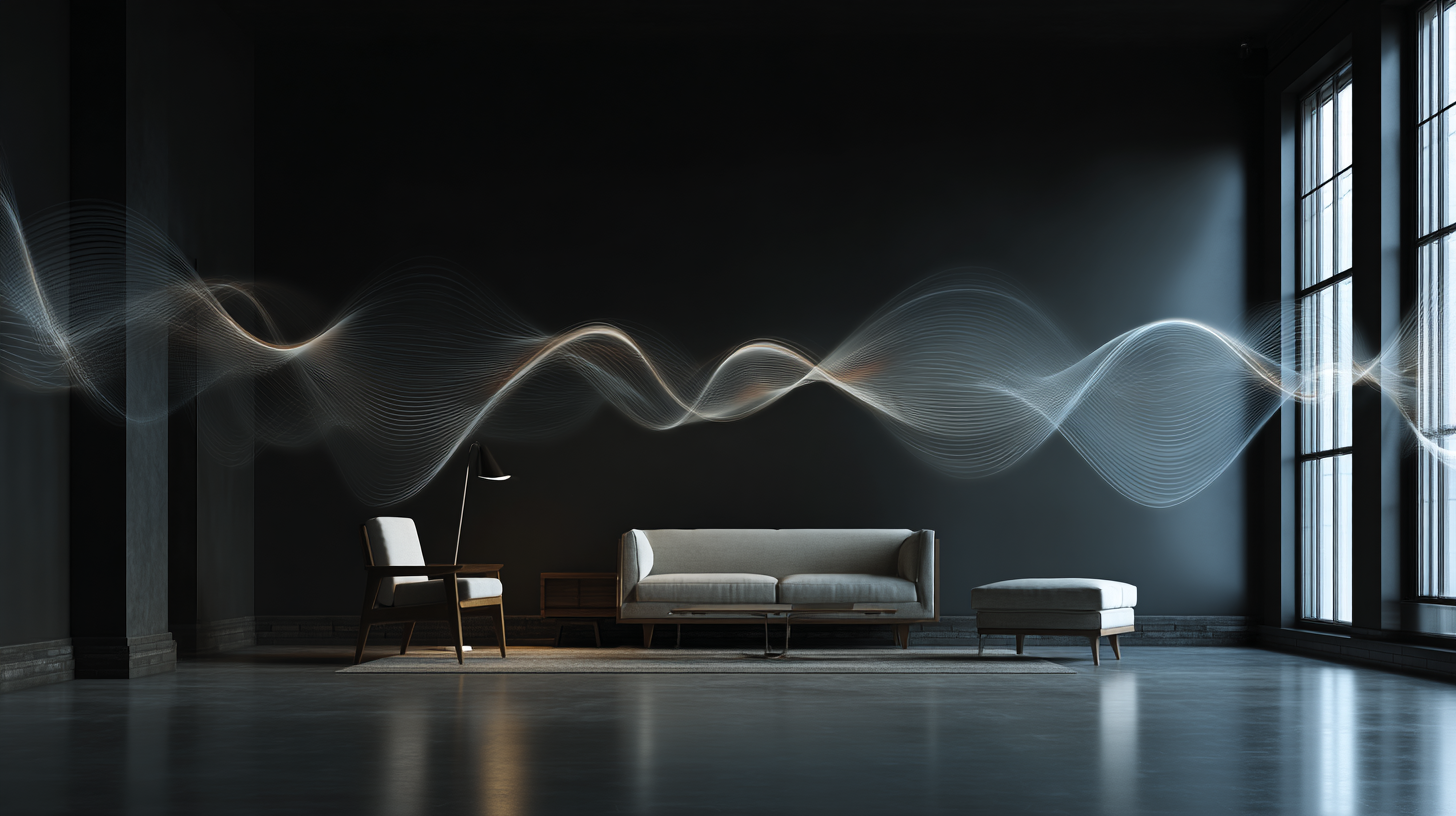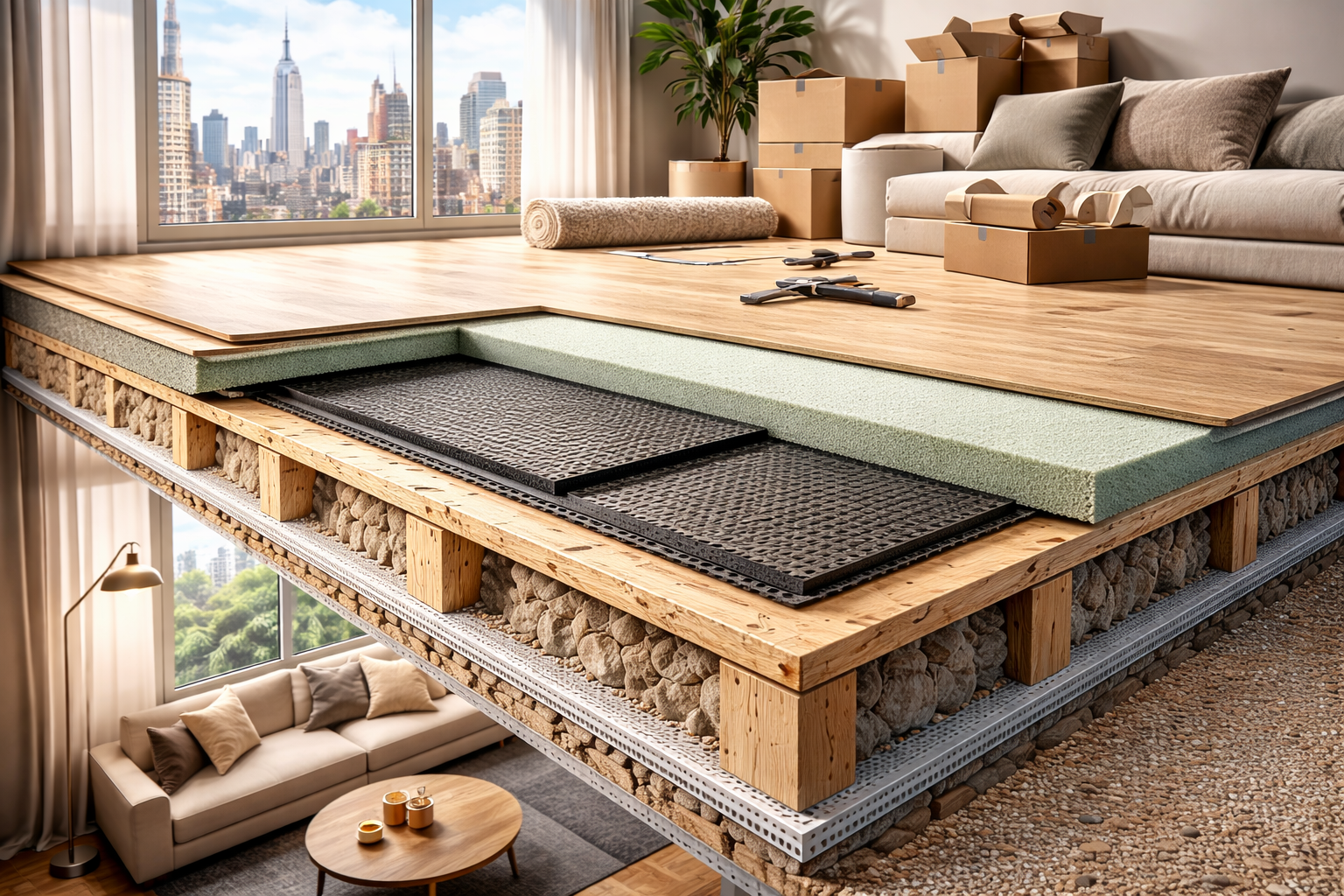What Happens When Sound Bounces Off Walls
When sound waves bounce off hard surfaces, you can feel it immediately - that echo, that "ring" that makes a room feel louder than it should. Whether it`s your apartment in Brooklyn, a home studio in Manhattan, or a restaurant filled with chatter, uncontrolled sound reflections can ruin comfort and clarity. At New York Soundproofing, we`ve spent years helping clients understand why this happens and what can be done to fix it. Let`s talk about what`s really going on when sound starts bouncing around your walls.
Why Do Sound Waves Bounce Off Walls
Sound is vibration - waves moving through the air until they meet something solid. When those waves hit hard, flat surfaces like drywall, glass, concrete, or wood, they don`t disappear. They reflect back into the room. That`s sound waves bouncing off walls.
Think of it like throwing a ball against a wall. The energy doesn`t vanish. It just changes direction. In a space without enough soft materials, sound reflections keep traveling back and forth, building up into an uncomfortable echo or "reverberation."
Different materials react differently. Bare concrete or glass will reflect almost all sound energy. Painted drywall will reflect most of it, too. On the other hand, carpets, curtains, or upholstered furniture absorb part of the energy, reducing that harsh reflection.
At New York Soundproofing, we study these interactions every day. Before any project begins, we measure the acoustic profile of a space to see where reflections are strongest. Once we know how the sound behaves, we can plan a treatment that fits - not just technically, but visually too.
What Is Sound Bouncing Off Walls Called

In acoustic terms, sound bouncing off walls is called reflection. But in real-life spaces, it`s more than just a word - it`s the reason your living room sounds "boomy," why meetings echo in offices, and why recording studios can`t get a clean take without treatment.
Reflections happen because surfaces act like mirrors for sound. When the reflected waves mix with new sounds being produced, they interfere with each other. Sometimes they reinforce certain frequencies, sometimes they cancel them out. That`s why one spot in a room might sound louder or muddier than another.
You might notice it most in rooms with minimal furniture or large empty walls. Even a beautiful loft with tall ceilings can sound unpleasant if the surfaces keep reflecting sound back and forth.
We often explain to clients that the goal isn`t to make a room "silent." It`s about balance - reducing unwanted reflections without killing the natural liveliness of the space. That balance is what separates proper acoustic treatment from random DIY fixes.
Common Problems from Uncontrolled Sound Reflection
When sound bouncing off walls isn`t addressed, several acoustic issues appear. First, you get echo - the obvious one. You clap, you speak, and you hear it come back. But echo is just the start.
Reverberation follows. It`s the lingering "wash" of sound that blurs words, music, and every noise in between. In offices, that means people talk louder to be heard, which only makes things worse. In restaurants, guests struggle to hold a conversation. In apartments, every footstep or TV sound feels multiplied.
Then comes fatigue. Whether you realize it or not, your brain is constantly processing those reflections, trying to separate what`s important from what`s bouncing around. After a few hours, that background effort turns into stress.
At New York Soundproofing, we see it every week - people calling because their new open-concept space looks amazing but sounds chaotic. They`re surprised that modern design choices like glass walls, high ceilings, and hard floors often make acoustics worse. Fortunately, it`s fixable once you understand where the reflections start.
How to Stop Sound Bouncing Off Walls
Controlling reflections is part science, part craftsmanship. The science is understanding where and why the reflections occur. The craft is turning that knowledge into a solution that fits your space and style.
When people ask how to stop sound bouncing off walls, the answer depends on the room`s size, purpose, and materials. But the first step is always the same - reduce hard, reflective surfaces and introduce materials that absorb or diffuse sound energy.
Here are some proven approaches our team uses every day.
Acoustic Panels and Sound-Absorbing Materials
Acoustic panels are one of the most effective and visually flexible tools for reducing reflections. These panels absorb sound energy before it bounces back into the room, cutting down on echo and reverberation.
When placed correctly, they handle the most common reflection points - the walls directly facing speakers or seating areas. Even a small number of panels can completely change how a room feels. Speech becomes clearer, and sound no longer feels like it`s bouncing from wall to wall.
Beyond panels, other materials like acoustic curtains, foam absorbers, and fabric-wrapped baffles also help. They trap sound waves and stop them from bouncing off flat surfaces. Every space is different, so the materials and density we choose depend on the frequencies that cause the most trouble.
Strategic Placement Solutions
Placement matters just as much as the materials. Covering every inch of wall space isn`t necessary and rarely looks good. Instead, we analyze where reflections are strongest - usually opposite sound sources, near corners, or behind speakers.
By adding absorption in those key areas, you get maximum improvement with minimal coverage. For example, a few well-placed panels behind a sofa or near a TV wall can stop that "hollow" echo without making the room feel padded.
In offices, ceiling-mounted panels and suspended baffles are excellent for controlling reflections without touching valuable wall space. In restaurants, we often use a combination of ceiling treatment and discreet wall fabric to preserve the design while fixing the sound.
These decisions come from experience - thousands of rooms analyzed, measured, and corrected. Every reflection behaves differently, and our job is to predict that behavior before it becomes a problem.
Professional Acoustic Treatment That Works
.png)
Fixing sound bouncing off walls isn`t about throwing foam on every surface and hoping for the best. Real acoustic treatment is a process - one that requires experience, accurate measurements, and an understanding of how sound behaves in three-dimensional space. That`s where New York Soundproofing comes in.
We`ve worked on everything from small home studios in Brooklyn to large open-plan offices in Manhattan. Every project starts with a conversation - not a catalog. We ask questions about how you use your space, what kind of noise you`re dealing with, and what "good sound" means to you. From there, we create a plan that fits your daily life, not just your walls.
Step 1 - Measuring and Mapping Reflections
Before installing anything, our specialists measure how sound moves through your space. We identify which frequencies are bouncing, where reflections are strongest, and how they interact with each other. This data tells us whether the issue is mostly sound waves bouncing off walls, ceilings, or even glass partitions.
You`d be surprised how often the biggest culprit isn`t what clients expect. Sometimes a single untreated corner or a glossy table surface can throw reflections that fill an entire room with echo. Once the map is complete, we know exactly what to target - and just as importantly, what not to over-treat.
Step 2 - Designing the Right Combination
A good acoustic design isn`t one-size-fits-all. Some rooms need absorption to calm echoes; others need diffusion to keep the sound natural. In home theaters, for example, too much absorption can make sound feel lifeless. In offices, you might want more control to prevent noise from traveling between workstations.
That`s why New York Soundproofing mixes solutions: acoustic panels, bass traps, diffusers, and fabric systems designed to match both the sound goals and the aesthetics of your space. We create walls that don`t just sound right - they look like they belong there.
Every panel is handmade locally, with acoustic cores tuned to the frequencies that matter most. Whether it`s a recording room, podcast studio, or luxury apartment, our goal is always the same - silence where you need it, warmth where you want it.
Step 3 - Expert Installation
Even the best panels won`t help if they`re not installed correctly. Sound doesn`t just bounce straight back - it scatters in all directions. That`s why installation requires precision. Our technicians make sure every panel is aligned for maximum absorption while maintaining a clean, seamless look.
We also take care of the practical details: wiring, lighting integration, and coordination with interior designers. Our work should enhance your space, not interrupt it. Clients often tell us that after installation, their rooms don`t just sound better - they feel calmer, more comfortable, more human.
Step 4 - Final Testing and Fine-Tuning
After the installation, we test everything again. Sometimes we adjust angles, sometimes add one more absorber, or move a diffuser. It`s all about balance. We don`t leave until the acoustics sound natural - not too dead, not too live.
In some spaces, especially in open commercial areas, reflections can shift slightly once furniture or people are added. We plan for that. By testing in real conditions, we ensure that what you hear every day matches what you expect.
Why Professional Treatment Matters
.png)
People often ask: "Can`t I just fix it myself?" Technically, yes - you can buy foam online and cover your walls. But what you`ll end up with usually looks messy and sounds wrong. You might stop some reflections, but create new problems, like dull or uneven sound.
Professional acoustic treatment means precision, not guesswork. We use high-quality materials that meet fire and safety standards, and we know how to install them without damaging walls or disrupting your lifestyle.
And because we custom-build everything in-house, we can match colors, fabrics, and even branding elements. Your acoustic treatment doesn`t have to scream "studio." It can blend in beautifully with the rest of your design - modern, minimal, or classic.
So, when you wonder if sound bounces off walls, the answer is yes - always. But when the right materials are used in the right way, those reflections stop controlling your room. You control them.
Bringing It All Together
If you`re struggling with echo, reverb, or just that uneasy loudness that never goes away, you`re not imagining it. Reflected sound is real, and it`s fixable.
New York Soundproofing combines technical precision with design sensitivity to stop sound bouncing off walls without sacrificing the look or feel of your space. Our team brings decades of experience in both acoustic engineering and construction, making sure every project is built to perform - and built to last.
Whether it`s your home, office, studio, or restaurant, we`ll help you understand what`s happening inside your walls and show you how to take control of it. Because when sound behaves, everything else just falls into place.
.png)


